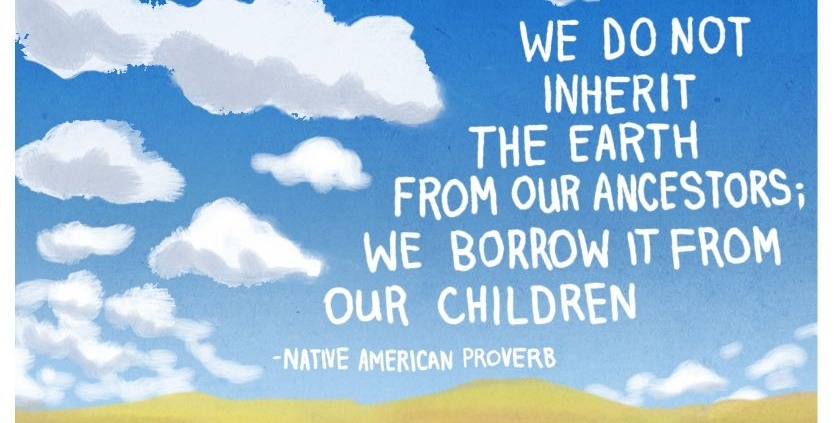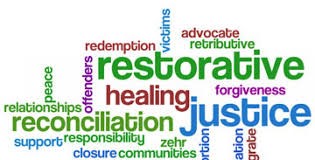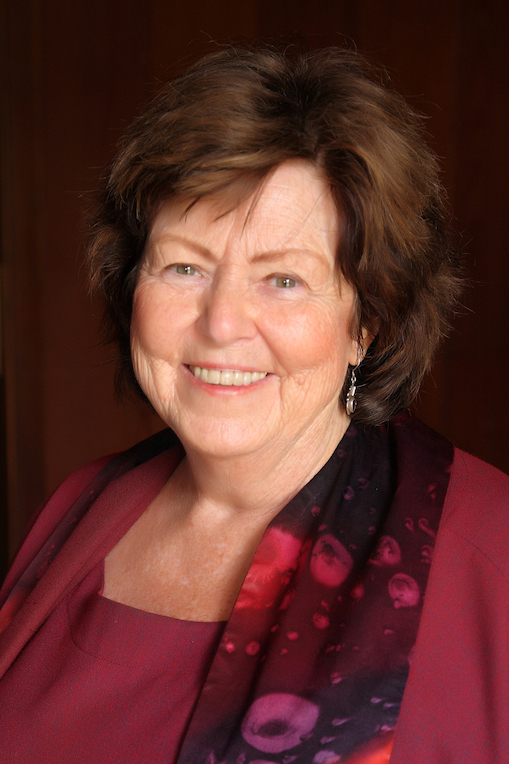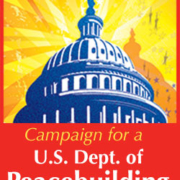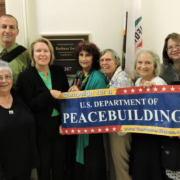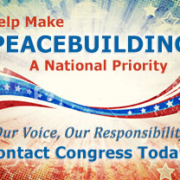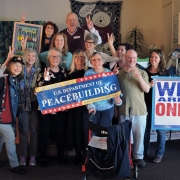Holiday Quarterly Newsletter – December 2018
Welcome to our Quarterly eNews with updates from
The Peace Alliance’s Leadership Council!
Catch up on the updates in each of our Peacebuilding
Cornerstones and Advocacy efforts in 2018!
Hoping You Enjoy Happy Holidays and
are Celebrating the New Year!
“Let us bring equality, justice, and peace for all. Not just the politicians and the world leaders, we all need to contribute. Me. You. It is our duty.”
Malala Yousafzai (2014 Nobel Peace Prize Recipient)
Upcoming Events:
January 8, 2019 – National Monthly interactive call, Guest Speaker Kit Miller of the MK Gandhi Institute for Nonviolence. Register here!
If you’re a Peace Partner – thank you! Regular monthly contributions are our sustaining funding source, making our work possible. Consider becoming a Peace Partner today– or ask a friend to join you!
Visit our webstore for Peace swag, including our new Make America Kind Again hat! Kindness is a value we treasure in our work for building a peaceful world. Share it, wear it, and be kind!
We’re looking forward to more in 2019, with your help, to continue to do the work of peacebuilding, and to engage our new Congress to heighten their awareness of the importance of policies to reduce violence, save money and lives, and increase peace in our communities and our world.
Teaching Peace in Schools 2018 Highlights
As the year 2018 closes, we would like to give a BIG shout out to several peace education programs and organizations that we have been fortunate enough to learn more about, engage with and promote. Starting from the early childhood and all through the higher education, these programs and organizations are approaching teaching peace in a unique way and impacting lives of many students nationally and internationally.
The Peace of Mind supports mindfulness-based social and emotional learning in early childhood and elementary schools through The Peace of Mind Curriculum, Storybooks, Classroom Resources, and Community of Practice gatherings. Year-long, weekly lessons focus on kindness, gratitude, empathy, conflict resolution and neuroscience. Students in PreK through Grade 5 learn how to notice and manage their emotions, form compassionate connections with others, and become peacemakers. The folks at Peace of Mind love to hear from educators interested in this important work!
The Peace Exchange trains youth Peace Builders in nonviolence and leadership. The Peace Exchange offers the Speaking Peace program to schools in Chicago (grades 5-8th). The program offers students the tools needed to avoid and peacefully resolve conflicts. The four-session program teaches tolerance, responsible decision-making, and nonviolence through discussions, role-playing, and documentary films.
Soliya is an international nonprofit organization preparing the next generation with the skills, attitudes, and commitment to engage with difference constructively. Soliya operates at the intersection of technology, peacebuilding, and global education to foster local awareness and global perspectives. The mission of Soliya is to empower young people to establish more effective, cooperative, and compassionate relations within and between their societies by providing high quality global education that combines the power of dialogue with the reach of new media technologies.
We are planning more calls, podcasts interviews, and webinar series so if you or someone you know practices and teaches peacebuilding in schools and would like to share it with us to inspire others, please send an email to [email protected]
Check out our Facebook group — The Peace Alliance Teaching Peace in Schools.
Shared by Jelena Popovic
Teaching Peace in Schools Lead
Peace Is the Essential Pre-requisite…
The earth is what we all have in common and the earth is in grave danger.
For 13 consecutive days in November, the greater San Francisco Bay and Sacramento areas were choked with debilitating and unbreathable air due to the huge Camp Fire many miles away in Paradise, CA. The air was declared “unhealthy” and “very unhealthy” and Northern CA briefly earned the dubious distinction of having the worst air quality in the world. Meanwhile, fires raged in Southern CA, including the Woolsey Fire which began on or near the Santa Susana Field Laboratory, where years of rocket testing, nuclear reactor testing, and liquid metal research have left the site “significantly contaminated.”
No area of this country will be untouched by the effects of climate change, from droughts and fires in the West, to the rising sea levels in Alaska and other coastal regions, to crop damage in the Midwest, to saltwater-tainted drinking water in Puerto Rico and the Virgin Islands, to poverty for millions of people, according to recent UN and US government reports. These are just some of the ramifications of climate change.
The November 2018 National Climate Assessment Report emphasizes that the outcomes depend on how swiftly and decisively the United States and other countries take action to mitigate global warming.
The Institute for Economics & Peace, states humanity is now facing global challenges unparalleled in history, which require cooperation on a scale unprecedented in human history. The most urgent of these include climate change, ever decreasing biodiversity, increasing migration and over-population. “Without peace it will not be possible to achieve the levels of trust cooperation or inclusiveness necessary to solve these challenges, let alone empower the international institutions and organizations necessary to address them … Peace is the essential prerequisite for the survival of humanity as we know it in the 21st century.” (The Institute for Economics & Peace. Global Peace Index 2018: Measuring Peace in a Complex World, Sydney, June 2018)
Peacebuilding matters. Yoko Ono said John Lennon’s philosophy was: Everything you think and do affects our society. So think peace. Start with that. To learn more about legislation to create a cabinet-level Department of Peacebuilding (DoP), see Department of Peacebuilding. To join efforts to create a Department of Peacebuilding, to help recruit cosponsors for DoP legislation which will be introduced in early 2019, and to receive notice of DoP Campaign monthly calls, email [email protected]. To learn more about personal peacebuilding, teaching peace in schools, promoting community peace, humanizing the justice system, and international peace, explore our website. To read more articles and to post your stories, go to Movers & Shakers on the Peace Alliance website, accessed from the Home Page. 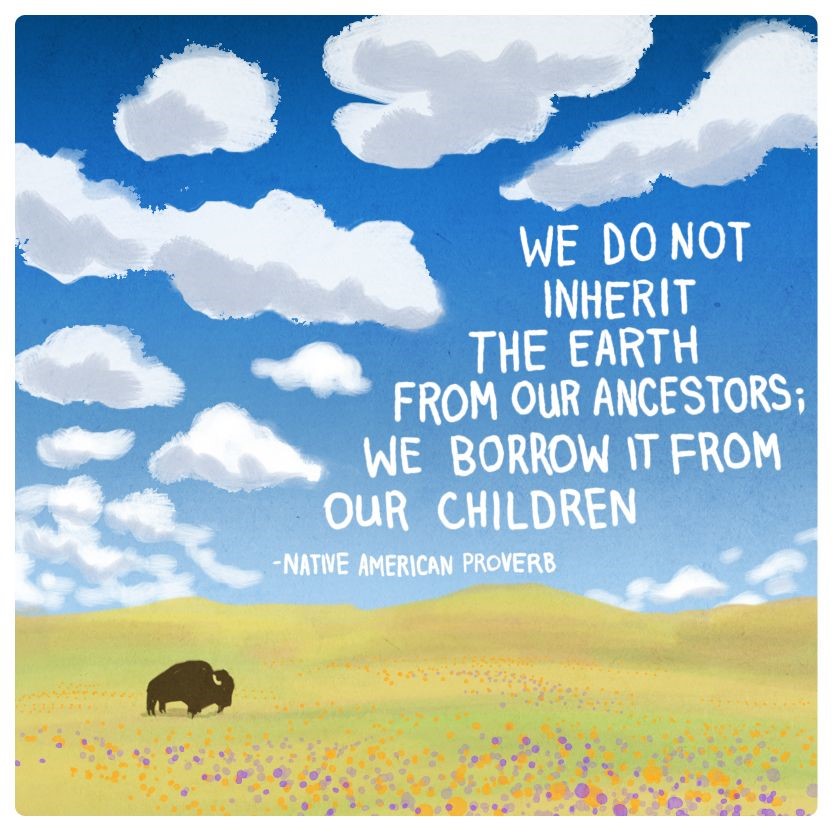

We do not inherit the earth from our ancestors, we borrow it from our children
– Native American Proverb
Shared by Nancy Merritt
Department of Peacebuilding Council Lead
Restorative Justice – Not an Oxymoron
Crime happens. All of us in our “civilized” societies are fully aware of this shared reality. Victims of crime suffer – and experience a range of emotions – anywhere from mere annoyance to sheer terror. How do these individuals find “justice?” How do victims heal? Is it possible for offenders to admit to accountability in the presence of those who have been harmed by their actions?
In the American justice system, victims are dis-empowered – they generally have little or no say in our legal system. The voice of the victims is represented by District Attorneys as representatives of “The State.” It is a newsworthy event when a victim is granted permission by a judge to directly address an offender.
Enter Restorative Justice – a breath of fresh air – the proverbial “ray of light/hope” in the complicated landscape of legal morass.
Restorative Justice (RJ) is based on a theory of justice and a global social change movement that endorses peaceful approaches to harm, problem-solving and violations of legal and human rights. According to Boston’s Suffolk University, College of Arts & Sciences, Center for Restorative Justice “restorative approaches seek a balanced approach to the needs of the victim, wrongdoer and community through processes that preserve the safety and dignity of all“.
Restorative Justice involves a fostering of dialogue between the offender and the victim, and has shown the highest rates of victim satisfaction, true accountability by the offender, and reduced recidivism.
RJ programs reflect restorative rather than retributive justice response to crime by
identifying and taking steps to repair harm, (ensuring accountability), involving all stakeholders (victims, offenders and community), and by transforming the traditional relationship between communities and their governments in responding to crime.
In Restorative Justice programs, the focus is on crime and wrong-doing as acted against the individual or community rather than the State. RJ processes emphasize repairing harm caused or revealed by criminal behavior – and focuses on the “back story” of how this situation arose. The focus on the needs of victims and offenders forges powerful connections and individual transformations, which speeds healing, rather than a focus on satisfying the abstract principles of law or the need of the community to exact punishment. Through RJ, the person who has done harm (offender) and the person who has been harmed (victim) take an active role in repairing harm.
In The Little Book of Restorative Justice by author Howard Zehr, Restorative Justice posits a paradigm shift that is best understood by asking the oft-quoted “three questions.” The more common three questions for a system of justice to ask are “1. What laws have been broken?, 2. Who did it?, 3. What do they deserve?” Restorative Justice asks, “1. Who has been hurt?, 2. What are their needs?, 3. Whose obligations are these?”
“Restorative justice is a value-based approach to conflict and harm. These values are often identified as inclusion, democracy, responsibility, reparation, safety, healing and reintegration. But one value is more essential than any other—Respect.” (Suffolk University)
Restorative Justice has the unique power to transform lives, and reduce recidivism and the high cost of crime and incarceration. The benefits of Restorative Justice include giving victims a voice in the justice process, enabling offenders to understand the impact of their actions on a victim, as well as the community, and providing opportunities for offenders to repair the harm and to help ensure positive future choices.
Bottom line:
Restorative Justice saves taxpayer money. The cost of incarcerating one youth for one year in a detention center or prison is $24,000 to $50,000+.
Recidivism rate after “warehousing” our youth: High.
The cost of deferring a youth post-crime to Restorative Justice programs: Approximately $150, and dedicated volunteer hours.
Recidivism rate after Victim and Offender connect in a supportive restorative circle: Low.
Pretty much price-less.
Have a happy & healthy New Year – and save $$ – support Restorative Justice in your community!
Shared by Patty LaTaille
Humanizing The Justice System Lead
Cultivating Personal Peace
Autumn arrived and covered the terrain of life with a vibrant invitation to remember to be thankful for the gift of life and for me the gift of cultivating personal peace as a daily practice and way of living.
One of the many ways that I support my practice of cultivating personal peace in my daily life is reading inspirational articles and this month I would like to share with you an insightful, easy read article by Marissa Hakansson, 3 Simple Ways to Cultivate Inner Peace.
Joe Weston, a powerful international teacher, author, and coach, brought his healing wisdom, knowledge, experience and guidance on Tuesday, November 13, 2018, as our guest speaker for our monthly National Call and shared his work on “Respectful Confrontations” where he teaches to “Stand in Your Power, and Speak Your Truth.”
Joe’s book Mastering Respectful Confrontation is a comprehensive guide, complete with inspiring practices and exercises that help you open to personal freedom, empowerment, and collaborative engagement in all types of relationships.
Take compassionate action and join us in our November and December call of action to encourage all Peace Alliance constitutes and Peace Advocates to write an OpEd Piece, on American Truth and Reconciliation. Click here for the action sheet that was shared in November for guidance, if you are interested in bringing your voice to the conversation.
If you are interested in being added to our Cultivating Personal Peace Facebook group, please email me at [email protected].
Shared by Ngozi Rasheda Akosia
Cultivating Personal Peace Lead
Promoting Peace By Phone & Podcasts
The big picture of the last few months and the next few months:
During the lead-up to the mid-term elections we focused on our Civil Dialogue Initiative, then we returned full attention to racial healing via Truth and Reconciliation processes. Both of these campaign initiatives will be ongoing. In January we will move toward presenting our full policy platform to the incoming new Congressional session, including educating them about the Five Cornerstones of Peacebuilding.
In greater detail:
- September’s guest speaker was Jill McManigal, founder and Director of Kids for Peace. With Jill’s guidance, our Monthly Action was to join her global kid-led initiative and take a series of daily actions for peace from the personal to the political.
- October’s guest speaker was Sylvia Boorstein, joined by Peace Alliance Board Member Emily Wikman. The topic was Cultivating Common Understandings Across Political Divides, and our Monthly Action was to sin and share the Civil Dialogue Pledge. We also had a report from DoP Committee regarding the highly effective Lobby Days in Washington DC in September. To further the Civil Dialogue campaign, we featured additional calls with Chic Dambach and John Wood Jr.
- November and December focused on the same set of actions regarding promoting Truth and Reconciliation processes, inspired by the new Peace and Justice Memorial and Legacy Museum in Montgomery, Alabama. November’s guest speaker was powerful coach and author Joe Weston, and December’s guest speaker was pioneering Alachua County Commissioner Robert Karl “Hutch” Hutchinson. Alachua County is at the forefront of a nationwide movement to bring awareness and healing to our history of racial violence and oppression. The actions to promote this process are threefold: research the issue, initiate conversations (including with local representatives), and write and submit an op-ed piece to your local paper.
Podcasts of all calls can be found here.
As the new Congressional session begins in January, we will be educating our federal representatives about the practical, powerful value of peacebuilding programs and policies. January’s guest speaker (on January 8th) will be Kit Miller, of the MK Gandhi Institute for Nonviolence. Register for that call Here!
Solidarity, Love, and Peace to you all!!
Shared by Dan Kahn
National Field Coordinator
Thank You Sister Mary Alice O’Connor
Mary Alice O’Connor, a shining presence in our Peace Alliance community, passed away on December 3, 2018. We already miss her.
“Mary Alice was an important and insightful member of our Peace Alliance team for many years, serving as a regional coordinator, as a Development Director, as well as an invaluable supporter of our organization in multiple other roles. She was a beam of light, steady voice of tolerance, positive spirit, joyful ambassador for peace and non-violence and represented the best of who a peacemaker can be,” said Peace Alliance Board Chair Judy Kimmel.
“The Mary Alice O’Connor I knew had a twinkle in her eyes and beauty in her heart,” said Nancy Merritt, Department of Peacebuilding Lead. “Mary Alice was also part of the East Bay/ San Francisco Area Peace Alliance, the Northern CA Department of Peacebuilding Campaign, and a Congressional District 11 compadre. In addition, I knew her as the Executive Director of the Mount Diablo Peace and Justice Center in Walnut Creek, a spiritual person, a minister, an organizer, a mom, the inspiration behind the Creating A Peaceful School annual conference in Walnut Creek, and a connector who seemed to know everyone.”
Mary Alice touched our Beloved Peacebuilding Community locally, in California, and nationally. To read more from those whose lives Mary Alice intersected and about the song that was her life, see Thank You Sister Mary Alice O’Connor.
Nancy Merritt
On Behalf of the Beloved Peace Alliance/ Department of Peacebuilding Community
A bird doesn’t sing because it has an answer.
It sings because it has a song.
– Maya Angelou
Update from TPA’s Dedicated Board of Directors
Board Summary — year end 2018
It has been a productive and fruitful last quarter of 2018. Your Board has been busy following up on our Civil Dialogue initiative, registering the results of the midterm elections, and looking toward strategies in 2019. We were happy to launch our “Civil Dialogue and Common Understanding Declaration” and hope that you continue to circulate and take a stand in your own circles for the importance of appropriate, measured political dialogue as the underpinning of our Democracy. Without fair and open debate on the critical issues of our time we are doomed to ongoing stress and legislative inaction.
Our national calls have included noted speakers Chic Dambach from the Alliance for Peacebuilding, noted author and mindfulness teacher Sylvia Boorstein, an executive from Our Better Angels organization and several more. Each month we attempt to educate and activate your inner peacebuilder, encouraging everyone to get out and get involved!
We were please to learn during this time that Marianne Williamson, one of our founders, is exploring a run for the Presidency. Her clear thinking, and historical perspective to our country’s evolution will certainly inform our greater political debate. You can go to her website to get a better picture of her thoughts and approaches to our national condition.
We continue to look for volunteers willing to contribute some time toward our Tech needs, as well as the other areas represented by our Five Cornerstones. Pleased contact us at [email protected] if you are interested in helping out. Jelena, our Teaching Peace in Schools Council Lead, is formulating a follow-up spring webinar to support teachers and educators in learning and expanding their understanding, and appreciation for a peacebuilding approach to the educational environment. If you have anything to contribute in that area please notify her at [email protected].
Finally, I wish to thank all of you in our greater Peace Alliance community for being steadfast supporters of our efforts to expand understanding of the vast peacebuilding community we serve. Your participation, whether financial or by intentional acts, warms our hearts and makes our efforts much more powerful. Thank you for everything you do each day to make this a better nation and planet.
In partnership for non-violence and peace,
Judy Kimmel
About The Peace Alliance
Mission:
The Peace Alliance empowers civic action toward a culture of peace.
Who We Are:
We are an alliance of organizers and advocates taking the work of
peacebuilding from the margins of society into the
center of national discourse and policy priorities.
We champion a comprehensive, collaborative approach
to peace and peacebuilding.


